


Braille surface – negative and positive texture
Rupert Spira – Love Text
Braille labels
Cars in a parking lot
Ingrid Lilligren – Cottonmouth / Finding Home
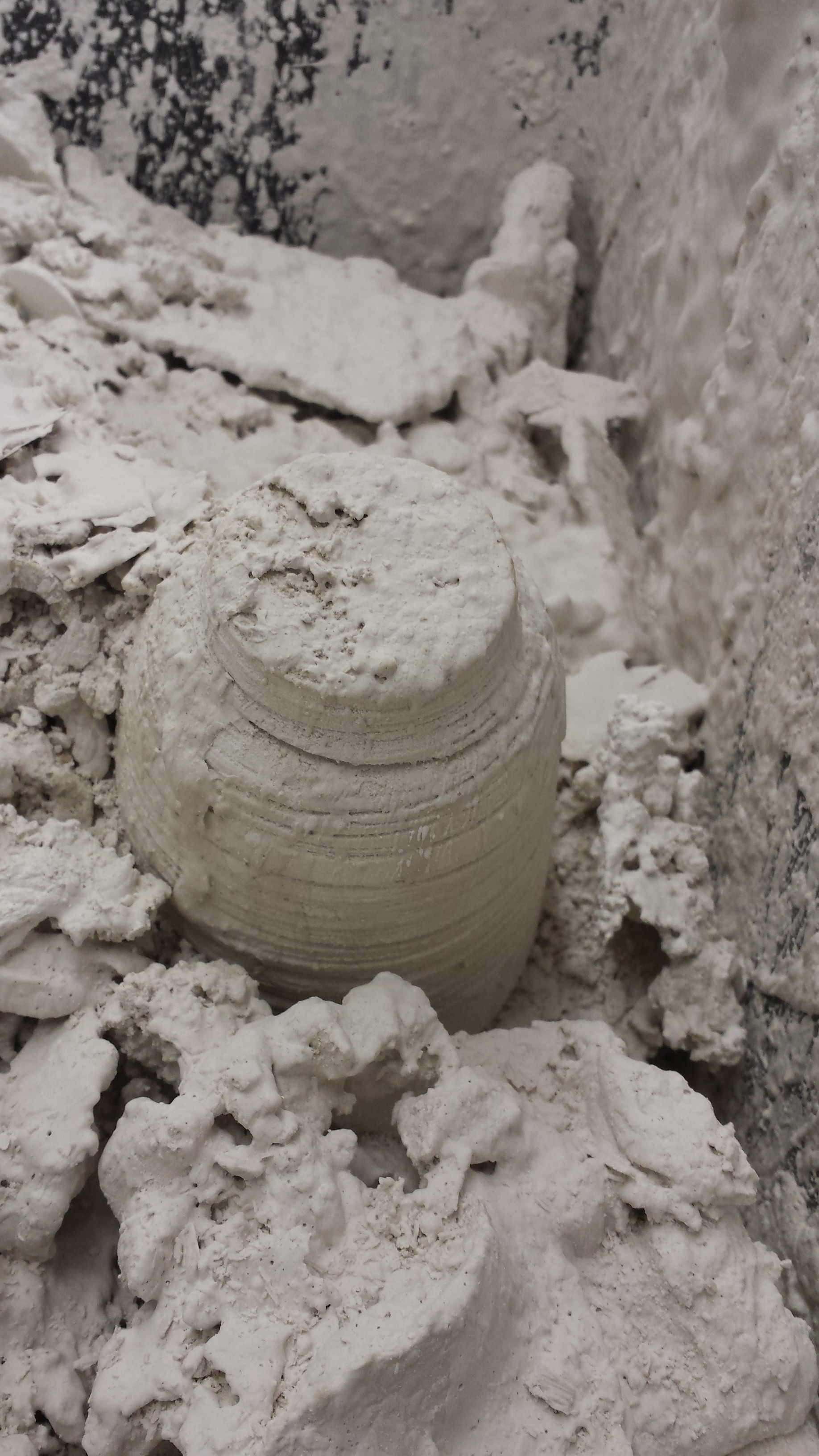
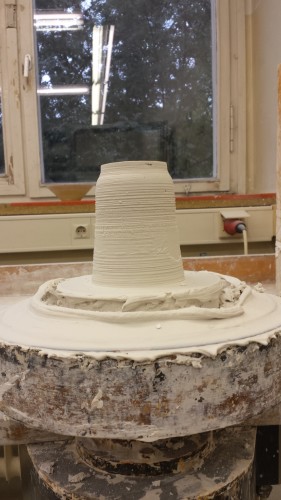
Workshop Progress: rough wheel moulded plaster centred with iron tools
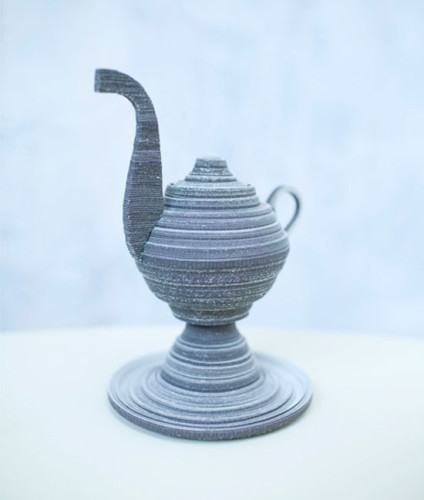
Coiled Paper Pot by Siba Sahabi

Frozen windblasted sandtowers

Ah, the classic experiment of dipping natural sponge into slip and firing it, taken to another level. Michael Fargo freely tears away at huge blocks of sponge, shaping them into various unique vessels. After firing and glazing, the vases often seem to resemble structures found in rocks.
Marjan van Aubel has developed a porcelain foam which expands about 300 % during firing, similar to leavened bread. Due to its open structure it is very lightweight and strong. During the process she experiments with controlling the material’s expansion versus letting it behave freely. 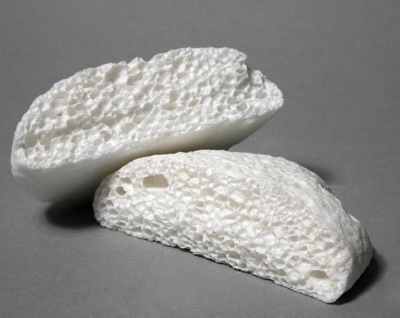

According to the artist “this work explores erosion and the disruption of form. Focusing on biological erosion, I wanted to convey the idea of a host being attacked and eaten away by a parasitic virus, highlighting the creeping spread of the infection as it corrupts the body. I have produced a series of angular porcelain forms, sandblasted to wear the surface and reveal inner strata. This aggressive process, contrarily, creates a delicate vulnerability in the shape. The translucency of the porcelain and the interruption of the surface make it possible to glimpse through to layers beneath, creating a tension between the seen and the obscured.”
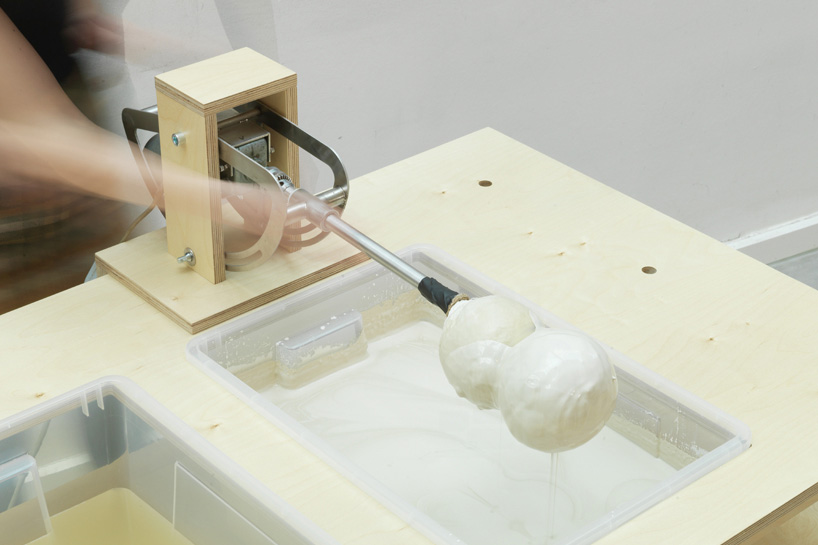
Kaja Woelky developed an unconventional porcelain casting technique based on the natural formation of a chicken egg. During the formation of an egg shell, calcium attaches itself to a membrane. Translated into porcelain, Woelky covered a supporting structure (called “pneu”) in a thin membrane of alginate, which she then coats with several layers of slip. This method allows small grains or seeds to be inserted in between the thin layers, creating a porous structure after firing.

The raw clay for these cups was contaminated with various ‘foreign’ materials, to mimic the growth and multiplication of bacterial colonies. Bringing the microscopic to the macroscopic level, the contamination spread in an uncontrollable way during firing.
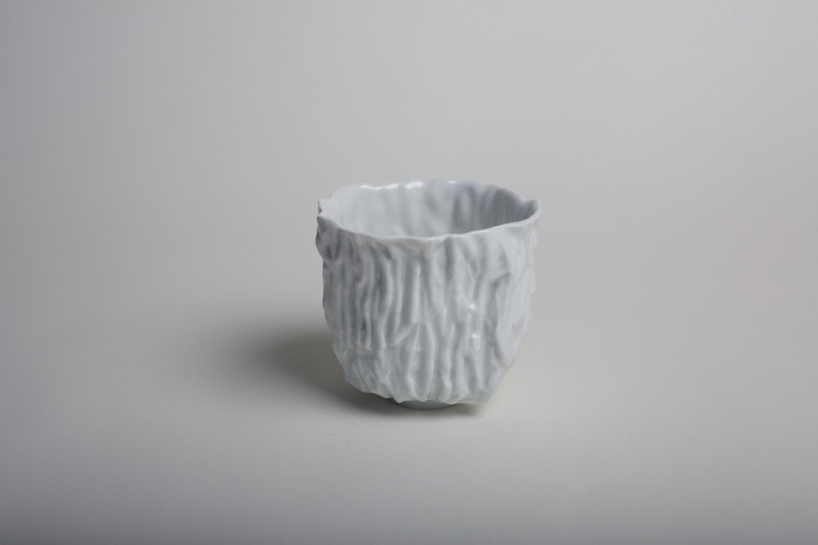
Marigold carved away at the surface of existing Meissen plaster moulds, casting containers each step of the way. The result is a one-of-a-kind series of gradually distorting vessels that edges on the line between destruction and creation.

Created with a non-traditional ceramic burnout technique, the pieces in the Porcelain Skins series are experiments in which familiar, store-bought materials are transformed into shapes that suggest coral, shells, or calcified remains. This process involves dipping groups of cotton material into liquid porcelain, letting the liquidized clay penetrate the surface of the cotton balls, Q-tips, or napkins, and then firing these materials and clay together in a kiln. During firing, the cotton ignites and burns away, leaving only the porcelain as a husk of the original material that shaped it: a skin.